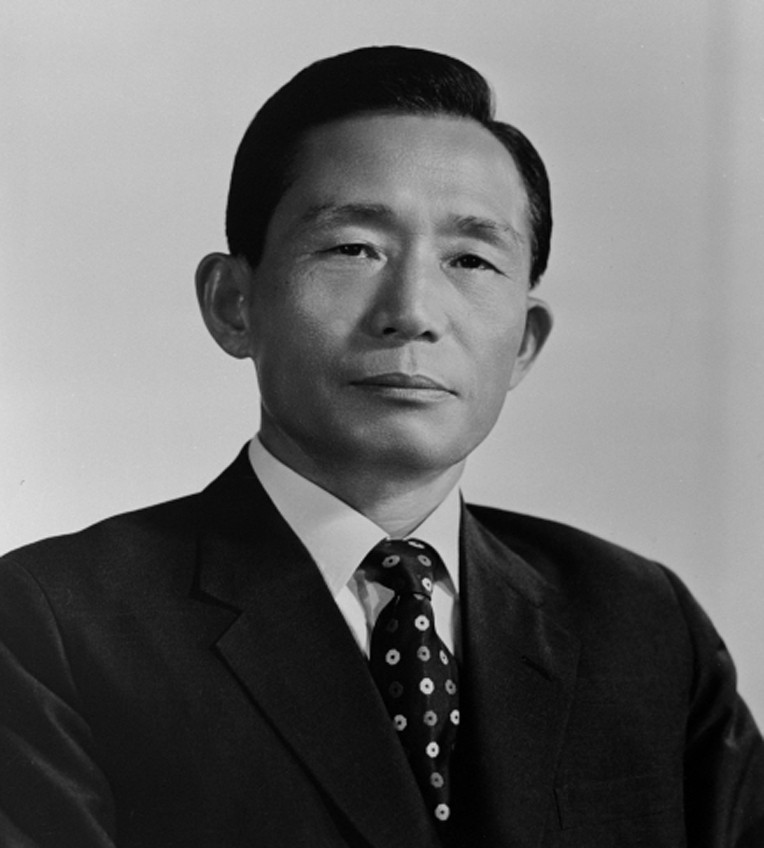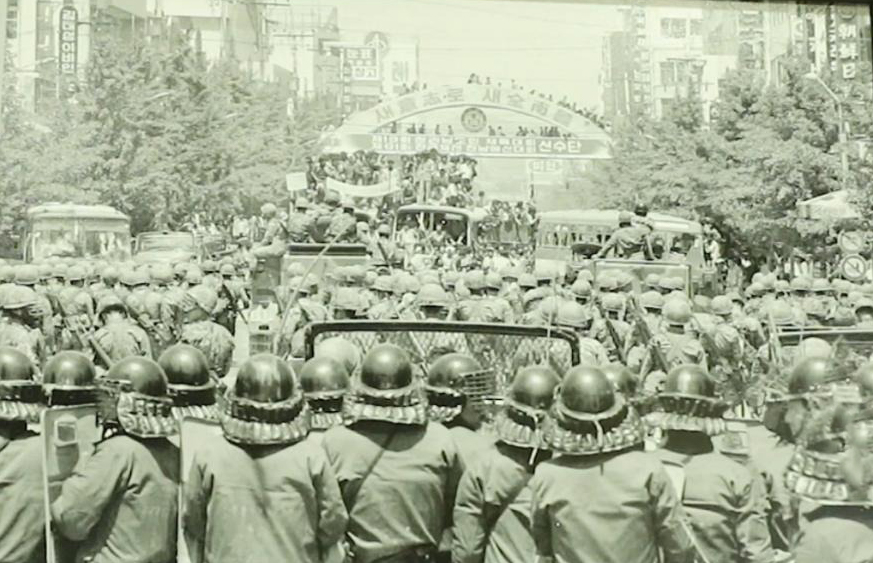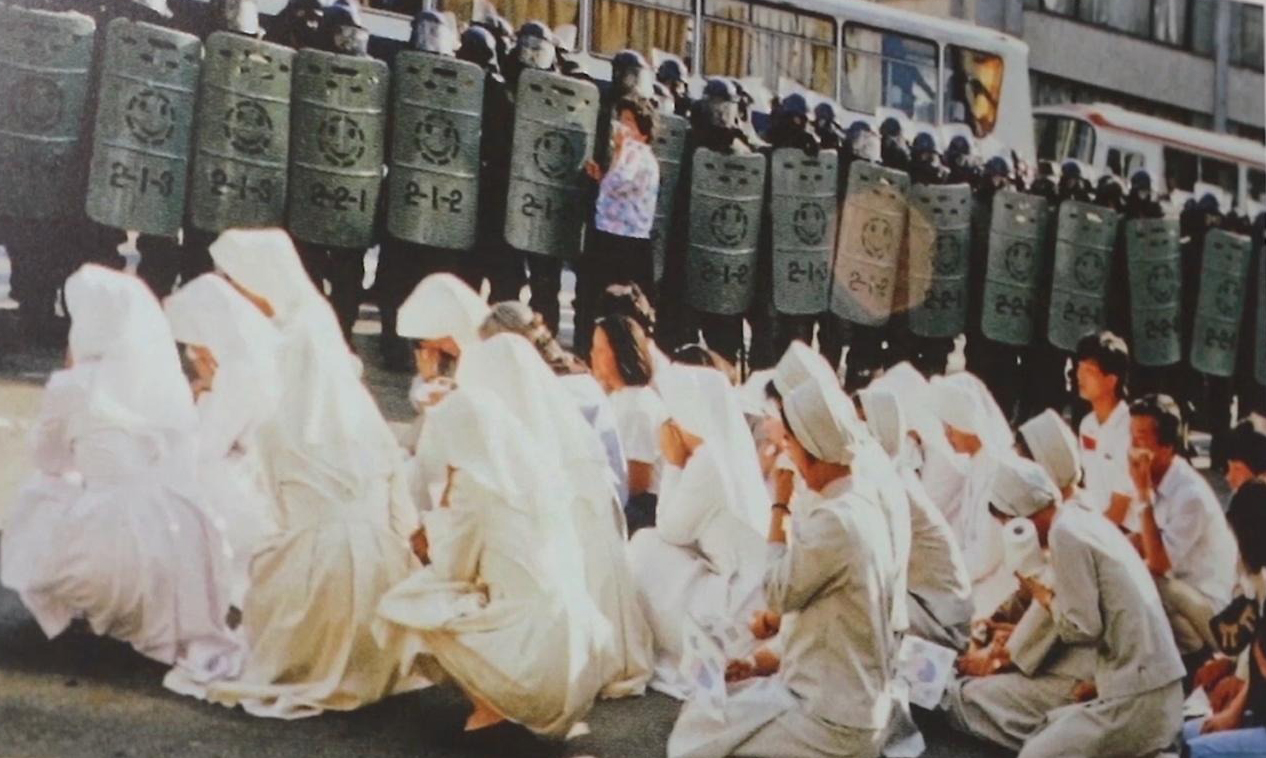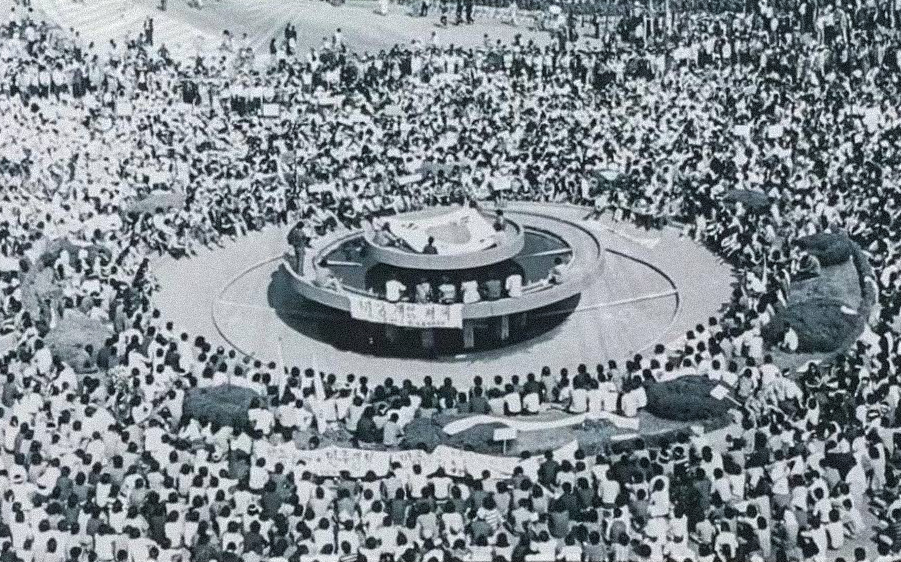Forty-two years ago this week, South Korea was engulfed in the flames of class struggle. Amidst the fight by the masses for democracy and to bring down the military, a heroic episode took place in Gwangju – a city of nearly one million people. The workers beat back a vicious military, and for a few days the working class de facto took over the running of the city, which was briefly under the control of armed workers’ militias.
In conditions of siege that were not unlike those that gave rise to the Paris Commune, the workers of Gwangju began to run society on their own. Though they were drowned in blood in the end, the struggle of the proletariat of Gwangju offered the world a glimpse of the power that the working class has at its fingertips.
The death of Park and the struggle for democracy
South Korea after the Korean War of 1950-1953 was a place of oppression, exploitation, and anguish. The masses suffered at the hands of two successive right-wing dictators, and they enjoyed none of the democratic rights that existed in the West. The United States, supposedly a champion of ‘freedom and democracy’, lent its unrelenting support to the dictators, in return for which the latter allowed the US not only to station troops in the country, but to remain in direct command of the Republic of Korea/US Combined Forces Command (CFC).
For the US, the Korean peninsula was a frontline of its counter-revolutionary crusade against the tide of revolutions that had broken out after WWII. The South Korean masses were merely small change in their efforts.
 By 1980, South Korea had been ruled by military dictator Park Chung-hee for nearly two decades / Image: public domain
By 1980, South Korea had been ruled by military dictator Park Chung-hee for nearly two decades / Image: public domain
By 1980, South Korea had been under the rule of the military dictator Park Chung-hee (박정희) for nearly two decades. Park, who had come to power through a coup in 1961, faithfully served US interests in the region, while crushing the South Korean masses beneath an iron heel. All oppositions and trade unions were suppressed or banned. The Korean Central Intelligence Agency (KCIA) meanwhile, following the model of its US counterpart, would crackdown on dissent through violence and torture. The Park regime, while based upon a different system of property from the deformed workers’ state in the North, was no less of a totalitarian police state.
The state under Park’s regime, however, also forced to strongly intervene in the economy to stimulate development, beginning with nationalisation of banks. Though the market system and private property were left intact (the existing big capitalist enterprises known as the ‘Chaebols’ were not expropriated) the Park regime forced them to invest in industries that were necessary for the state’s designs. Far from being a product of market forces, it was only heavy state intervention directing economic development that lead to the creation of heavy industries and export sectors unseen under the previous Rhee Sung-man regime. During this time, South Korea’s economy grew by an average 10 percent a year. Its GDP went from $3.96 billion USD in 1960 to $65.4 billion USD in 1980.
With the growth of capitalism came the growth of the working class and an educated student element. By the late 1970s, protests demanding democratic rights – often led by students – began erupting everywhere, despite the Park regime’s iron rule.
The labour movement soon followed suit, the sit-down strike of women textile workers of YH Trading Company in August 1979 being a particularly inspiring example. The regime responded with a bloody crackdown on all acts of defiance, but the struggle continued to grow. The ruling class and the state were thrown into a state of panic, and the head of the KCIA decided to assassinate Park Chung-hee.
But the sudden death of the dictator did not lead to the collapse of the dictatorship. Instead, General Chun Doo-hwan (전두환) stepped in as the new dictator. He declared martial law, mobilised the troops to crackdown on the protests, and arrested prominent opposition leaders. But the students and the masses continued their fight against the dictatorship across multiple cities, among them Gwangju in the South Jeolla Province, which is a region with a rich tradition of struggle stretching back through Korean history.
The whip of reaction
Marx once observed that revolution is often spurred on by the whip of reaction. This was certainly the case for the masses of Gwangju. On 18 May, the military regime deployed the 33rd and 35th Battalions of the 7th Airborne Brigade to Gwangju’s Chosun University and Chonnam University – two hotbeds of student protest in the region. These battle-hardened paratroopers greeted the students with merciless violence. Hundreds of unarmed students were clubbed and gassed by soldiers, who had bayonets attached to their rifles.
Faced with overwhelming violence, the students fled the campuses and regrouped in the city to continue their protest, while spreading the news of the military’s atrocity. As sympathetic masses joined the students’ processions, the soldiers pursued them with even more vengeful violence. Even mere passers-by were viciously assaulted by the rampaging paratroopers.
The first recorded victim to lose his life at the hands of the army was Kim Gyeong-cheol (김경철), a deaf cobbler who was only having lunch with his friends at work. The paratrooper happened to encounter this unlucky young worker in the street. A few hours later, he was rushed to hospital with a crushed skull, left eye socket, right arm, back and left leg. He died shortly after arriving.
Rather than inspiring fear, news of similar atrocities across the city inspired rage and a brave willingness to fight among the masses. Contrary to the regime’s hopes, the protests in Gwangju were swelled by outraged citizens. Many workers actively reached out to the students, offering them shelter, while arming themselves with elementary weapons.
The military doubled down on its response. On 19 May, the regime declared a blockade of Gwangju and sent in the 11th Airborne Brigade to assist in the repression. Soldiers were permitted not only to shoot at protesters, but also commit other unspeakable acts in order to instil fear among the population. In their initial attempts to suppress the rising struggle, the soldiers raped and tortured women encountered at gunpoint or already in their custody, a fact that the South Korean government only admitted 38 years after.
But the masses were uncowed by this beastial attack. Instead, the working class stepped up to face the soldiers head on. Taxi and bus drivers rammed into police barricades. Many workers began confronting the soldiers with their sheer numbers. Others organised to take the wounded demonstrators to safety. The masses of Gwangju took note of the fact that the media had either downplayed the situation on the ground or else misreported it to the rest of the country, and they thus burned down the local Munhwa Broadcasting Corporation (MBC) station in anger.
Fearlessly advancing with taxis and buses against the army and police positions, the masses began gaining, whilst growing stronger as new layers of workers joined the struggle. Despite their superior firepower, the soldiers were forced to retreat into government buildings. By 21 May, hundreds and thousands of people were in the streets confronting the troops who had barricaded themselves into the Provincial Government building and a handful of other locations.
The workers’ militia and workers’ power
Confident after their initial fightback, the masses were determined to drive the soldiers out of Gwangju. The soldiers, however, were heavily fortified in their positions, and had helicopters and armoured vehicles. The improvised weapons and civilian vehicles that the masses had at their disposal would not do the trick. The workers understood the need to arm themselves.
 With the confidence gained through their initial fightback, the masses became determined to drive the soldiers out of Gwangju – but the soldiers were heavily fortified with helicopters and armored vehicles / Image: May 18 Democratic Uprising Archive
With the confidence gained through their initial fightback, the masses became determined to drive the soldiers out of Gwangju – but the soldiers were heavily fortified with helicopters and armored vehicles / Image: May 18 Democratic Uprising Archive
Some worker militants in Gwangju travelled to nearby mining towns to obtain dynamite from the miners and to appeal to the miners to join them. Others raided police stations – in Gwangju and in nearby counties in order to obtain guns and ammunition. The workers rapidly organised themselves into militias, giving themselves the name Simin-gun (시민군), or ‘Citizen’s Army’.
The militias consisted of workers from a broad range of industries, which according to the eye-witness account in the Gwangju Diary, “comprised workers from construction sites, small workshops, and shoeshine men; and ragpickers, street vendors, waiters, and menial workers. Middle-age men wearing reserve army uniforms had joined to avenge the deaths of family members.”
The presence of army reservists in particular was pivotal. Their military training meant they could bring organisation to the largely improvised and inexperienced workers’ militias, which were now grouped into clear combat cells. They also conducted firearm training for anyone willing to join the fight.
Under the leadership of these reservist cadres, the workers’ militia successfully drove the paratroopers out of their heavily fortified positions, leaving them with no choice but to flee Gwangju in haste.
Although many had given their lives in the struggle, this victory was a tremendous injection of morale, spurring the working class on into taking control of the city into their own hands.
Dual power and reaction from within
Beyond the military engagement with the army, the proletariat of Gwangju began improvising their own organs of class power in order to maintain the functioning of society. As early as 21 May, the workers of the Lotte Pastry and Coca Cola plants had taken charge of distributing bread and drinks to the masses. Food allocation networks were spontaneously organised by small vendors and housewives.
There were jubilant scenes as a new class order began emerging in Gwangju:
“Masked militia members drove all over the city, pointing guns out the windows, singing and chanting. Their cars displayed signs written in blood: “End Martial Law!” and “Down with Chun Doo-hwan!” They were like victorious soldiers returning home. The rebels were cheered wherever they went, receiving food and wet towels from housewives, tonic drinks from pharmacists and cigarettes from storeowners. They fielded questions and told war stories. Though some later described the militia and its allies as a drunken mob, nobody was drinking alcohol.
“At dawn, militia cells on the outskirts returned to the city after an all-night battle with the paratroopers. They had heard of the government’s withdrawal and were now bracing for an imminent invasion by martial-law forces. The cells also had to police the city, and reorganized themselves in front of Gwangju Park. Several young men painted numbers on the commandeered vehicles and began to assign drivers. Small cars were to carry messages; larger ones, people and supplies; jeeps were for reconnaissance, and patrol; and military trucks for combat. Registered drivers were told to encourage other rebels to have their vehicles registered.” (From the Gwangju Diary)
A new authority based on the power of the proletariat was emerging. Yet at the same time, a significant source of confusion and reaction would come not from the regime, but from within the city itself.
While power was effectively in the hands of the workers, they did not consciously realise this at the time. Parallel with the workers’ power, there remained the preexisting ruling class elements of Gwangju, who were now without a military or police force. These people superficially opposed the repression of the military (how could they not?), but their whole activity was dedicated to pulling back the working class. As the workers had not decisively taken the power, the Vice-governor of South Jeolla Province Jeong Shi-chae (정시채) was able to convene the bourgeois elements in the city to form a “Citizen’s Settlement Committee”.
The make-up of this body was not in the least representative of the masses. Rather, it consisted of “prominent citizens”: fifteen clergymen, Catholic priests, lawyers, government officials, and businessmen. Their primary objective was to negotiate a surrender to the government, while sowing illusions among the workers that this was the only path to change.
Although it did not have strong authority among the workers, there was no revolutionary party that could help the proletariat to forge a political leadership of their own, to sweep aside the bourgeois elements in the Settlement Committee, and to work to spread the insurgency nationwide towards a socialist revolution. Without this perspective, and constantly undermined by the fifth column of the Settlement Committee, the uprising became confined within the blockade established by the military, and was starved of oxygen.
The fall of Gwangju and the role of US imperialism
Contrary to the soothing message that the Settlement Committee was telling the workers, the military had no intention of ending the fight peacefully. Instead, the Chun Doo-hwan regime was busy securing the United States’ backing to drown Gwangju in blood. Chun would get the go-ahead he was looking for, and on 27 May, five divisions of the infantry and mechanised infantry – totaling over 20,000 troops – drove into Gwangju from all directions and crushed the uprising. Attack helicopters were used to mow down people.
 Official figures at various times counted only hundreds of deaths, but many sources indicated that casualties could have been in the thousands / Image: May 18 Democratic Uprising Archive
Official figures at various times counted only hundreds of deaths, but many sources indicated that casualties could have been in the thousands / Image: May 18 Democratic Uprising Archive
The counter-revolution led to an untold number of deaths. Official figures at various times counted the death toll as merely in the hundreds. But many sources have indicated that the real casualty figure could have been in the thousands. The brutality of the crackdown left an indelible scar on the Gwangju masses that is felt to this day.
US imperialism was entirely complicit in this counter-revolutionary bloodbath. Both the US forces and embassy clearly understood the social implications of the Gwangju uprising and gave their blessing to the Chun regime, though they have always evaded official responsibility.
But such a bloodbath would have been impossible without US complicity. To begin with, the command structure of the ROK/US Combined Forces Command required any deployment on the scale of that which Chun Doo-hwan used against the Gwangju masses to have the explicit approval of the American commander, who at the time was General John A. Wickman.
Furthermore, according to veteran US journalist Tim Shorrock, who obtained communication records between US officials and the South Korean regime at the time, Chun was already discussing military suppression of protests around South Korea even before the Gwangju uprising. As the Gwangju struggle went into full swing, the US ambassador William H. Gleysteen issued a panicky demand for a crackdown in the city:
“On May 23, hours after the White House meeting, Mr. Gleysteen paid a call on Acting Prime Minister Park to communicate the U.S. position. In the discussion, Mr. Gleysteen reported back, “I said that the policy decisions of May 17 had staggered us.” However, the two officials “agreed that firm anti-riot measures were necessary, but the accompanying political crackdown was political folly and clearly had contributed to the serious breakdown of order in Kwangju.”
“Mr. Gleysteen also noted that the United States was “doing all we can do contribute to the restoration of order,” and cited the official statements issued in Washington the day before and “our affirmative replies when asked to ‘chop’ CFC forces to Korean command for use in Kwangju.””
Notably, in another set of documents, Shorrock found that, contrary to the outward-facing propaganda peddled by the South Korean military regime, the US fully understood that North Korea had nothing to do with the Gwangju uprising:
“A Defense Intelligence Agency (DIA) report dated June 5, 1980, and based on unnamed sources within the South Korean military, made the startling claim that some 2,000 people in the Gwangju area had “secured arms and made their way into the wilds” after the uprising was put down on May 27. While participants in the rebellion have denied any such movement in Gwangju’s nearby mountains, which were heavily patrolled by the ROK Army, they point with pride to the DIA’s observations that “the motivation to go into the hills was not communist inspired,” and that “the rebels…are truly representatives of the people of Cholla Namdo (South Jeolla).”
“Moreover, US military intelligence openly scoffed at Chun’s claims of North Korean involvement. That can be seen in a secret DIA cable (dated June 2, 1980) about an official ROK Ministry of Defense report claiming that a North Korean agent had been captured in Seoul after “agitating demonstrators” in Gwangju. “The data is one-sided and somewhat distorts” the picture, DIA concluded about what it called the “alleged communist infiltration.” The analyst added, somewhat sarcastically: “The ROKG would have it believed that because of these aggitations (sic)…extended ML [martial law] was the will of the people.””
In short, US imperialism understood the crackdown on Gwangju not part of a military skirmish with the North Korean regime, but was part of a social war against the South Korean working class. They were afraid lest a genuine, democratic worker’s power should arise and spread in South Korea, and reignite a revolutionary wave across East Asia.
Fear of revolutionary contagion also explains why the bureaucratic regimes in North Korea, China, and the USSR showed complete passivity to the crushing of the Gwangju workers. These governments restricted themselves to purely tokenistic, verbal condemnations of the South’s violence against the masses.
Had they been genuinely revolutionary regimes, they would have mobilised every resource available to aid the Gwangju insurgents and help the South Korean workers drive out capitalism and US imperialism. In reality, they were all deformed workers’ states governed by bureaucratic dictatorships that feared genuine workers' democracy far more than they feared the forces of imperialism. Aiding the development of a workers’ power in Gwangju would have been contrary to their interests as parasitic bureaucracies, and could even have encouraged workers in their own countries to follow suit.
Preserving the legacy
Although the Gwangju proletariat’s heroic struggle was decimated in the end, the struggle against the dictatorship elsewhere in South Korea continued with ebbs and flows. By the 1990s, mass strikes and protests emerged once again. However, the leadership of these anti-dictatorship movements fell into the hands of bourgeois liberals, who would form the basis of what became today’s Democratic Party in South Korea.
These elements had no perspective of overthrowing capitalism or letting the working class take power. Instead, they directed the energy of the masses’ struggle into legal channels, and opted for gradual changes with tacit support from the US. The result was a limited bourgeois democracy, with US imperialism preserving its presence, and many elements of the former dictatorships being likewise preserved.
Those with direct ties to the dictators of the past, backed by the Chaebol oligarchy, formed the basis of South Korea’s modern hard-right conservative camp. They were even able to capture several presidencies through elections, among them Park Chung-hee’s daughter, Park Geun-hye, and most recently Yoon Suk-yeol.
Chun Doo-hwan, the butcher of Gwangju and of countless South Korean class fighters, would never face justice in his lifetime. The system after “democratisation” still allowed the likes of him to occupy high places and to live comfortable retirements. After a lifetime spent cutting lives short, Chun died at the ripe old age of 90.
Though the dictatorships have gone away, the very same capitalist system and the very same ruling class that has brutalised the Korean workers remain. The task of the Korean proletariat therefore remains unfinished, and their history of struggle for emancipation alongside workers of the world is not yet over. The Gwangju Uprising has already secured its unerasable place in this history. It positively demonstrated the potential power that the working class holds in its hand.
Marxists and class fighters around the world therefore have a duty to preserve the memory of Gwangju so that workers everywhere can draw insight and inspiration from it, until the world socialist revolution is victorious.

